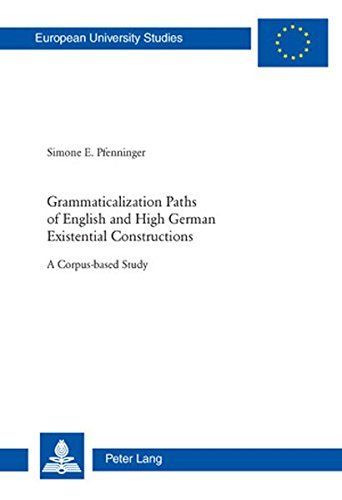
Grammaticalization Paths of English and High German Existential Constructions A Corpus-based Study
Existential constructions are a fundamental feature of many Indo-European languages, and constructions with non-referential subjects have developed in all of the latter, albeit at different stages in their histories. High German does not feature a prototypical existential construction that is equivalent in syntactic and pragmatic function and semantic meaning to the English existential there-construction. How did a prototypical existential structure originate in English? Why is it that High German has never developed such a construction? Has it ever shown a tendency towards developing one? How did two closely related languages such as English and High German come to differ so much with respect to these constructions? By means of investigating a variety of historical and contemporary data this study shows that not only semantic, pragmatic and syntactic factors are involved, which decide the choice of a certain construction, but also very much the more general different linguistic development that the two languages underwent in the course of time.